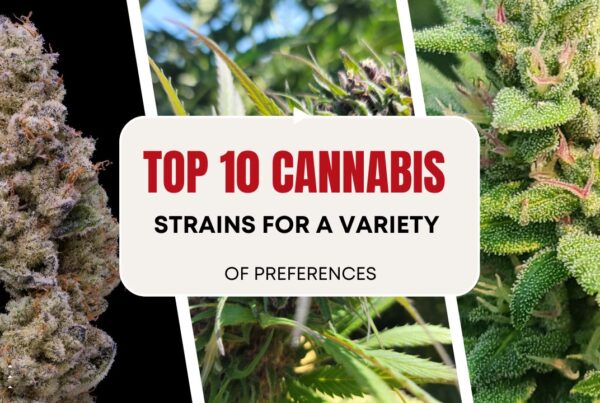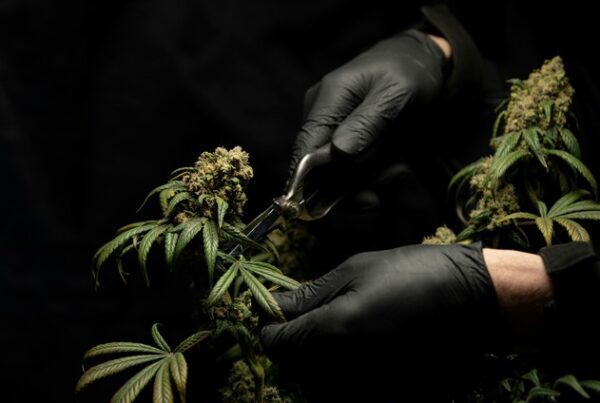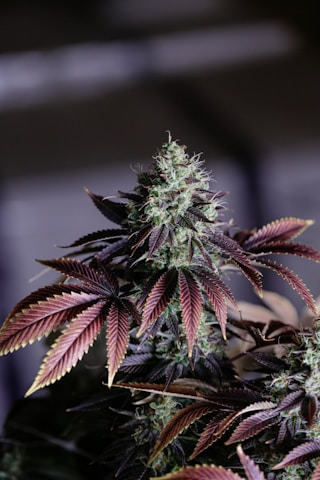The Benefits of Feminized Seeds

Feminized seeds have become a game-changer for growers. These specially bred seeds offer a multitude of benefits, from maximizing yield to simplifying the cultivation process. By understanding the advantages of feminized seeds, growers can harness their potential to optimize their outdoor growing operations. In this discussion, we will delve into the various benefits of feminized seeds and explore how they can revolutionize the outdoor growing experience.
Choosing the Right Strain
Factors Influencing Strain Selection
- Understanding the Purpose: Choosing the right strain is crucial and should be based on the intended use, whether it’s for medicinal, recreational, or industrial purposes. Each strain has different effects and benefits, so understanding the purpose is essential for making the right selection.
- THC vs. CBD Content: When selecting a strain, it’s important to consider the balance of THC and CBD. THC is psychoactive, while CBD is non-psychoactive and known for its therapeutic effects. The ratio of these compounds varies across strains and significantly affects the overall experience. For example, strains with higher THC levels may be more suitable for recreational use, while those with higher CBD content might be preferred for medicinal purposes.
- Aroma and Flavor Profile: Beyond the chemical composition, the aroma and flavor profile of a strain also play a significant role in selection. Some users prefer fruity or floral aromas, while others may be drawn to earthy or spicy flavors. Understanding personal preferences and the aromatic and flavor characteristics of different strains can guide the selection process.
Considering Adaptability to Outdoor Conditions
- Climate Preferences: When choosing a strain for outdoor cultivation, understanding its climate preferences is crucial. Some strains thrive in warm, sunny climates, while others are more resilient to cooler temperatures. Factors such as temperature fluctuations, humidity levels, and overall climate conditions should be considered to ensure the strain can adapt successfully to the outdoor environment.
- Pests and Diseases: Evaluating a strain’s natural resistance to common pests and diseases is an important consideration for outdoor growers. Certain strains have built-in defenses against pests and diseases, reducing the need for extensive pest management efforts. By selecting a strain with natural resistance, growers can mitigate potential risks and minimize the use of chemical pesticides.
- Yield and Harvest Time: Outdoor growers should also consider the strain’s yield potential and the time it takes to reach maturity. Strains with shorter flowering periods are often preferred for outdoor cultivation due to seasonal limitations. Additionally, assessing the expected yield can help growers plan their harvest and production schedules effectively.
Cultivating Cannabis outdoors offers a multitude of options when it comes to selecting the right strain. By carefully considering the factors influencing strain selection and evaluating adaptability to outdoor conditions, growers can make informed decisions that align with their specific goals and environmental considerations.
Section: Optimizing Outdoor Growing Conditions
Creating an Ideal Outdoor Environment for Feminized Seeds
- Importance of Sunlight and Shade for Optimal Growth
- Soil Quality and Drainage for Healthy Root Development
- Pest Control and Companion Planting for Natural Protection
- Utilizing Organic Fertilizers for Nutrient-Rich Soil
- Proper Watering Techniques to Maintain Moisture Levels
Weather and Climate Considerations for Outdoor Cultivation
- Understanding Temperature and Humidity Needs for Different Plant Stages
- Adapting to Seasonal Changes and Extreme Weather with Precautionary Measures
- Utilizing Protective Measures such as Greenhouses or Row Covers for Unpredictable Conditions
- Monitoring Wind Conditions and Providing Windbreaks for Plant Protection
- Incorporating Natural Wind and Sun Breaks to Shield Plants from Harsh Elements
Creating an optimal outdoor growing environment for feminized seeds requires careful planning and attentive maintenance. Adequate sunlight exposure is vital for the growth and development of plants. Understanding the balance between sunlight and shade is essential to prevent sunburn and promote healthy growth. Additionally, maintaining proper soil quality and ensuring efficient drainage is crucial for the establishment of a strong root system.
Implementing pest control methods and companion planting not only safeguards the plants from harmful insects and pests but also fosters a symbiotic ecosystem. This natural approach minimizes the need for chemical interventions and encourages a thriving outdoor environment for the feminized seeds.
When considering outdoor cultivation, it is imperative to account for the influence of weather and climate on the growth process. Temperature and humidity requirements vary during different stages of plant growth, and it is important to monitor and regulate these factors accordingly. Adapting to seasonal changes and preparing for extreme weather events is essential for safeguarding the plants and ensuring a successful harvest.
Protective measures such as greenhouses or row covers serve as effective shields against adverse weather conditions, providing a controlled environment for the plants to thrive in. Furthermore, incorporating windbreaks and natural barriers can help mitigate the impact of strong winds and harsh elements, contributing to the overall well-being of the outdoor cultivation. By understanding and optimizing the outdoor growing conditions, cultivators can create an environment that nurtures the feminized seeds to their fullest potential.
Cultivation and Maintenance Tips
Cultivating and maintaining feminized seeds outdoors requires careful attention and adherence to best practices. In this section, we will explore essential tips for nurturing feminized seeds outdoors and address common challenges that arise in outdoor cultivation.
Best Practices for Nurturing Feminized Seeds Outdoors
- Choosing the Right Location: Selecting a suitable outdoor location with ample sunlight, good air circulation, and well-draining soil is fundamental to the successful growth of feminized seeds. Avoid areas prone to flooding or with poor drainage to prevent waterlogged conditions.
- Watering Techniques: Implement proper watering methods to support healthy root development and overall plant vigor. Deep, infrequent watering encourages root growth and helps prevent water-related issues such as root rot. Consider utilizing watering schedules that align with the plant’s specific needs based on factors like climate and soil type.
- Nutrient Management: Understanding the nutritional requirements of feminized plants is crucial. Organic fertilizers and supplements can provide essential nutrients while also promoting soil health and microbial activity. Consider soil testing to assess nutrient levels and adjust fertilization accordingly for optimal growth.
- Pest and Disease Control: Proactive pest and disease management is vital for safeguarding outdoor crops. Regular monitoring for early signs of infestation or disease, coupled with the use of natural predators, botanical pesticides, or cultural practices, can help maintain plant health and minimize damage.
- Training and Pruning Techniques: Employ training methods such as low-stress training, topping, and defoliation to shape plant structure, enhance light penetration, and encourage lateral growth. Pruning selective foliage and utilizing plant supports can help manage overall plant size and promote better air circulation.
- Harvest Timing: Observing and monitoring trichome development, along with other plant indicators, is essential for determining the optimal harvest time. Aim to harvest when trichomes display the desired characteristics to ensure peak potency and flavor.
Addressing Common Challenges in Outdoor Cultivation
- Weather Resilience: Protecting feminized plants from adverse weather conditions, including extreme temperatures, strong winds, and heavy rainfall, can be achieved through the use of protective coverings, windbreaks, and shade structures. Additionally, selecting resilient cultivars suitable for the local climate can enhance outdoor cultivation success.
- Pest and Wildlife Management: Implement integrated pest management strategies, such as the use of beneficial insect habitats, companion planting, and physical barriers, to deter pests and wildlife. Employing natural deterrents and creating biodiversity in the garden can help maintain ecological balance.
- Soil Improvement: Enhance soil quality by incorporating organic matter, compost, and cover crops to enrich soil fertility, improve structure, and encourage beneficial microbial activity. Regular soil testing and pH adjustments can aid in maintaining an optimal growing environment.
- Water Conservation: Implement efficient irrigation methods, such as drip systems, and utilize mulching to conserve water, prevent soil erosion, and maintain consistent moisture levels. Proper water management is crucial, especially in arid or dry climates.
By incorporating these cultivation and maintenance tips, outdoor growers can optimize the growth and resilience of feminized seeds, effectively manage common challenges, and ultimately achieve successful harvests.
The use of feminized seeds for outdoor grow operations offers numerous benefits that can greatly enhance the cultivation experience. From increased efficiency in resource allocation to a higher likelihood of producing potent, high-quality yields, feminized seeds provide a valuable tool for outdoor growers. Additionally, the elimination of the need to identify and remove male plants saves time and effort, allowing for a more streamlined and productive growing process. Overall, the adoption of feminized seeds can contribute to a more successful and satisfying outdoor cultivation experience.










